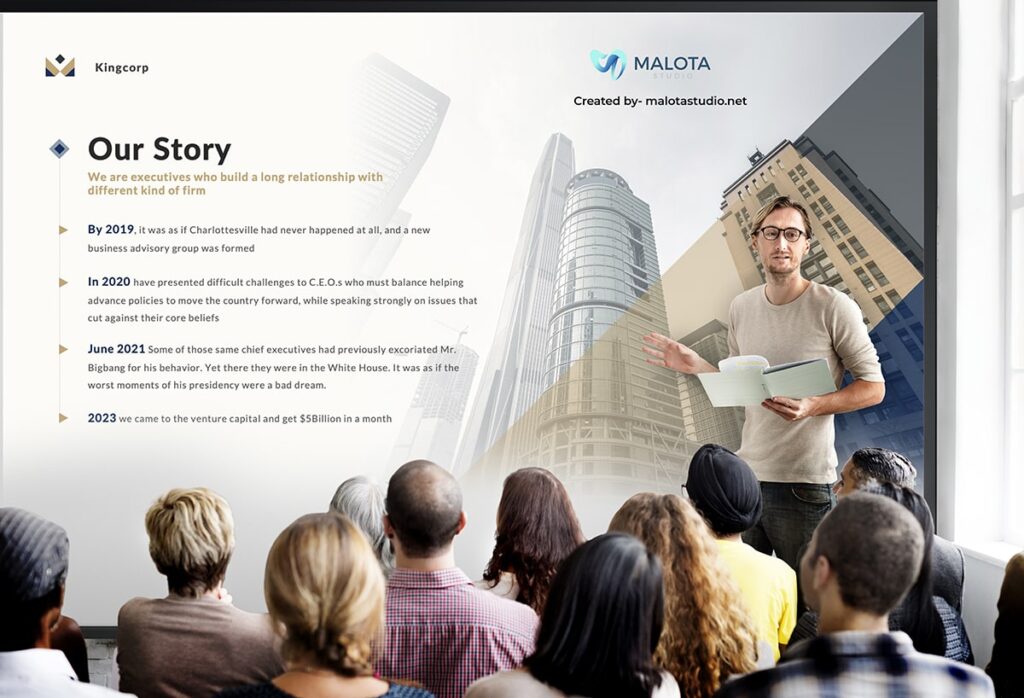
Environmental, Social, and Governance (ESG) reporting has evolved from a compliance requirement into a strategic communication tool. In 2025, investors, regulators, and stakeholders aren’t just asking what your company is doing—they’re asking how well you can explain it.
And that’s where visual storytelling comes in.
If your ESG report still looks like a wall of text and tables, you’re missing an opportunity to build trust, inspire change, and influence decisions. In this guide, we’ll explore how to use visual storytelling to elevate your ESG reporting in a way that’s clear, credible, and compelling.
Why visual storytelling matters in ESG reporting
Stakeholders want transparency, but they don’t want to read 100 pages of dense text. They want to:
- See your impact at a glance
- Understand your long-term commitments
- Feel emotionally engaged with your sustainability story
Visual storytelling bridges the gap between raw data and human connection. It turns carbon metrics, workforce demographics, and governance benchmarks into a narrative people can understand—and believe.
According to a 2024 PwC report, 86% of institutional investors say ESG reporting plays a key role in their decision-making, but only 33% believe companies provide high-quality disclosures. That gap is a design opportunity.
Common challenges in traditional ESG reports
Most ESG reports fall short because they are:
- Overloaded with raw data and technical language
- Designed without a visual hierarchy
- Disconnected from the brand story
- Hard to navigate, especially for non-expert readers
If your report looks like a spreadsheet in PDF form, your message might be lost—no matter how powerful your data is.
What visual storytelling actually means
It’s not just about adding icons or infographics. Visual storytelling in ESG reports means:
- Structuring information like a story (beginning, middle, end)
- Using visual elements (charts, timelines, illustrations) to support key messages
- Designing for both the eye and the brain—using hierarchy, flow, and emotion
A good ESG story answers:
- What problems are we solving?
- What actions are we taking?
- What progress have we made?
- What’s next?
All of that, visually mapped and clearly communicated.
Structuring your ESG narrative with design
The best ESG reports don’t just list numbers—they build a journey. Here’s how to design that flow:
1. Begin with a big idea
Start with a clear theme or headline that captures your ESG commitment.
Example: “Building a Resilient Future: Our 2025 Sustainability Roadmap”
Use full-page visuals, environmental photography, or strong illustrations. Set the tone emotionally, not just technically.
2. Break content into sections
Divide your report into digestible themes—Environment, Social, Governance—each with its own intro, iconography, and visual language.
Use color coding and tab layouts to help readers navigate.
3. Visualize metrics, don’t bury them
Replace or supplement data tables with:
- Impact infographics (CO₂ reduction, water usage, waste diverted)
- Timelines (carbon neutrality goals, policy changes)
- Heatmaps (supply chain audits, workforce diversity)
Every number should feel like part of a bigger story—not a standalone stat.
ESG visual design principles for 2025
In 2025, great ESG reports follow these key visual storytelling principles:
Clarity over complexity
Use flat design, readable typography, and simple charts. Avoid decorative clutter.
Authenticity over perfection
Use real photos of your operations, teams, and communities—rather than sterile stock images. Let your visuals reflect your values.
Localization over generalization
If you’re targeting global markets (like the Middle East, Europe, or the U.S.), adapt your layouts to different languages and cultural preferences. For example, Arabic versions may need RTL formatting and different icon styling.
Consistency over chaos
Establish a visual style guide for all charts, fonts, colors, and icon sets. This ensures your ESG message feels coherent and trustworthy across all pages.
Tools and platforms I use for ESG storytelling
Depending on client needs, I use a combination of:
- Adobe InDesign – for structured PDF reports
- PowerPoint – for editable, boardroom-ready decks
- Figma or Canva – for fast collaboration or live updates
- Excel + Illustrator – for rebuilding charts and impact visuals
I also offer bilingual or RTL formatting for clients targeting Arabic-speaking audiences, ensuring that the message is both global and local.
ESG design vs. regulatory disclosure
It’s important to note: visual storytelling doesn’t replace compliance—it enhances it.
Your report still needs to meet frameworks like:
- GRI (Global Reporting Initiative)
- SASB
- TCFD
- CSRD (for EU markets)
But you can design around the compliance. Turn KPIs into dashboards. Turn policies into icons. Turn carbon goals into a timeline.
The end result is a report that’s both compliant and captivating.
Final thoughts: Let your impact speak visually
As ESG reporting becomes a key trust-builder for organizations, it’s time to treat it like a core communication asset—not just a box-ticking exercise.
Through intentional visual storytelling, you can turn your sustainability efforts into a message that resonates with investors, partners, customers, and your own people.
Let your numbers breathe. Let your visuals speak. And let your story inspire action.
If you need help transforming your ESG report into a visual experience, I’d love to collaborate.
Explore our ESG report design services
Contact us to start your visual transformation



